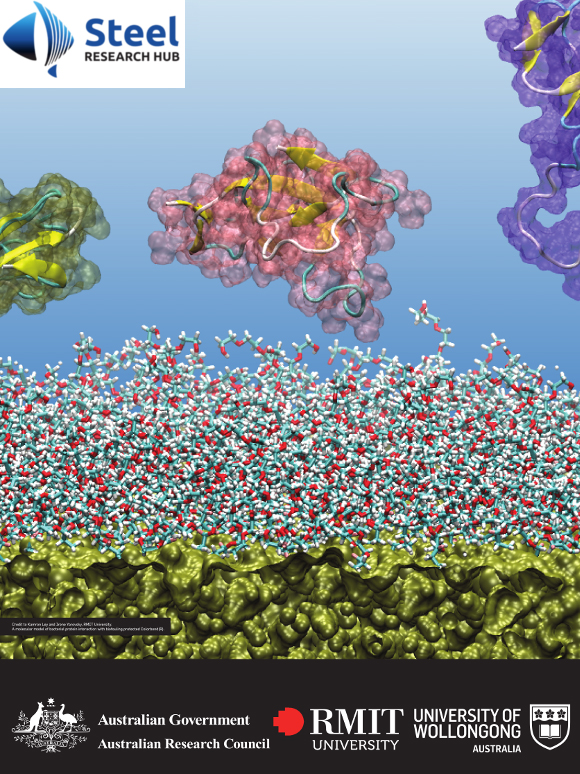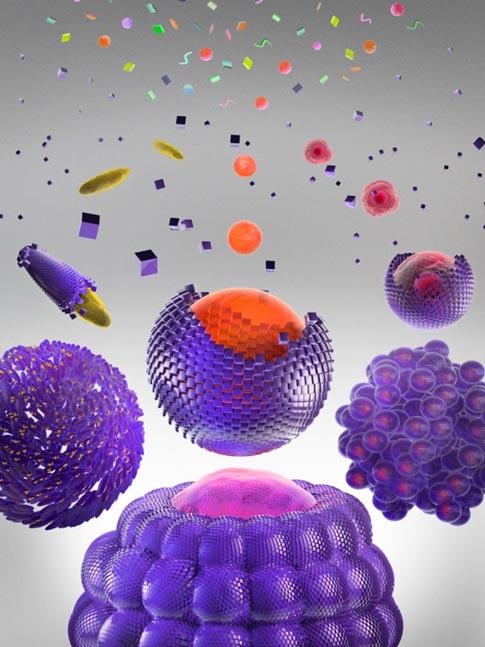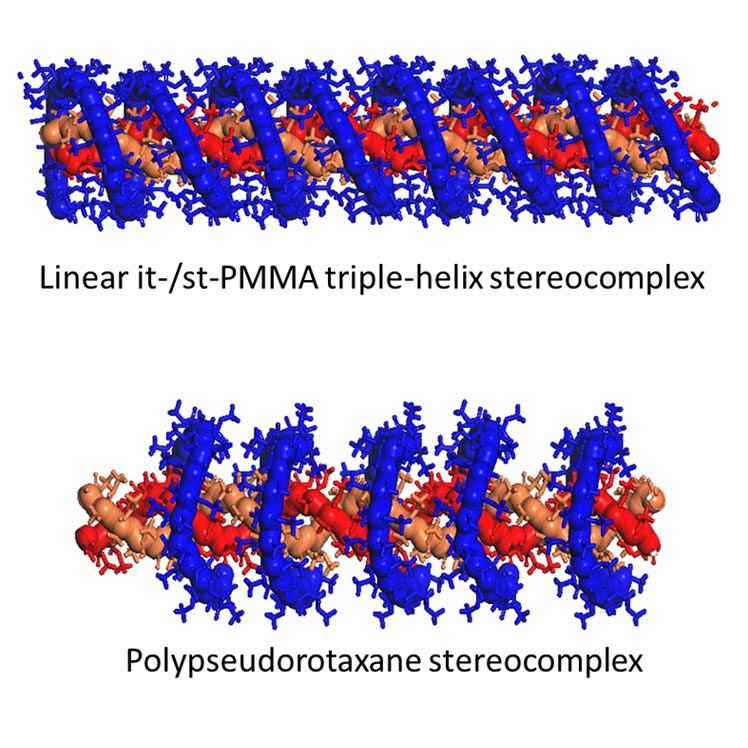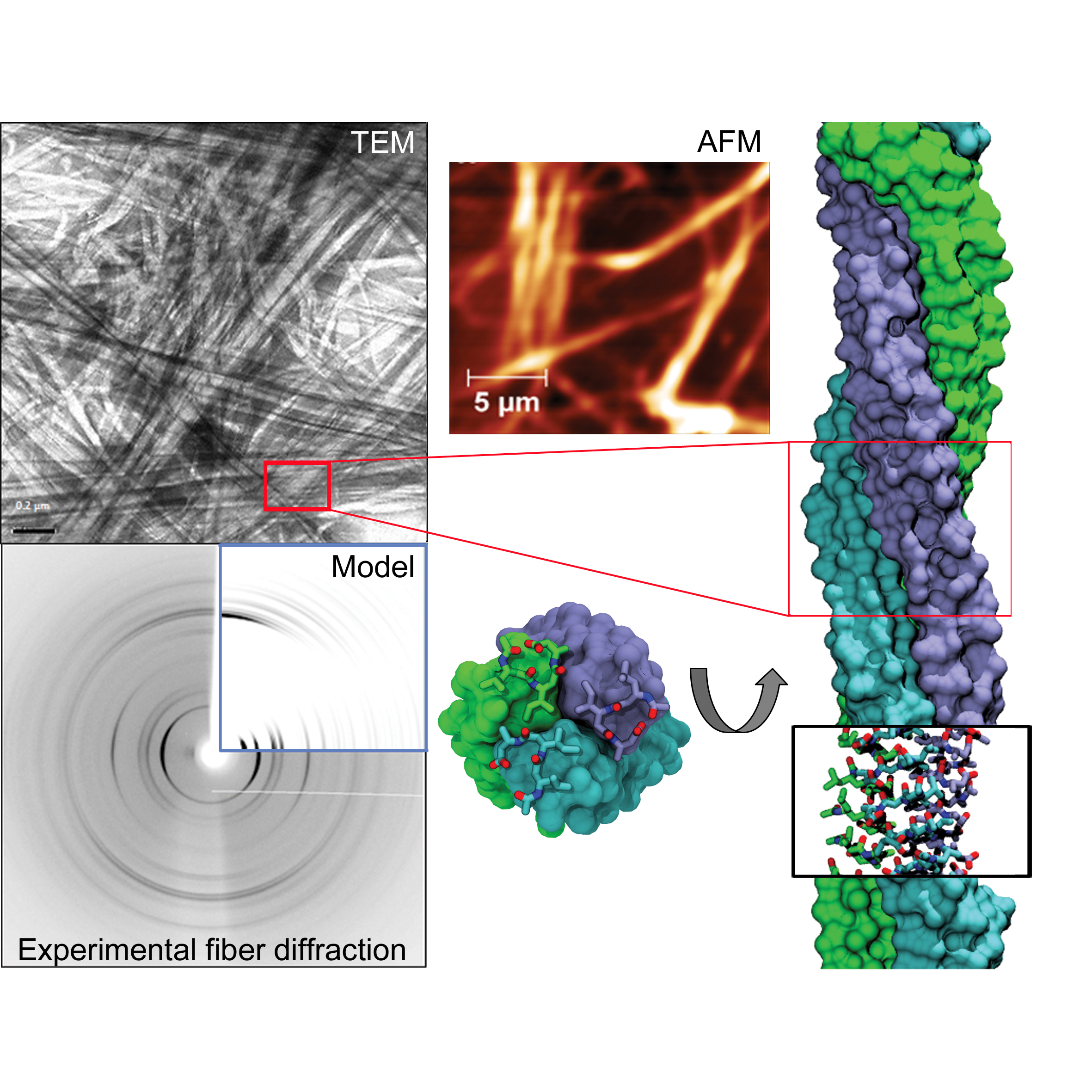Research highlights from our collaborations with experimental groups on the self-assembly of nanomaterials.

Nature Nanotechnology article: Modular Assembly Of Superstructures From Polyphenol-Functionalized Building Blocks
By J. Guo, B. Tardy, A. Christofferson, Y. Dai, J. Richardson, W. Zhu, M. Hu, Y. Ju, J. Cui, R. Dagastine, I. Yarovsky, and F. Caruso
A recent study by Prof Irene Yarovsky’s research group on the modular assembly of nanostructures, in collaboration with Prof Frank Caruso at the University of Melbourne has been published in Nature Nanotechnology.
The work demonstrated that by coating nanomaterials with a polyphenol to create LEGO-like ‘studs’, normally incompatible materials could become compatible.
This simple and modular approach has been demonstrated for 15 representative materials to form different sizes, shapes, compositions and functionalities.
The modelling work performed by Dr Andrew Christofferson and Prof Irene Yarovsky of RMIT's School of Engineering in the Manufacturing, Materials and Mechatronics discipline revealed that the adsorption of metal-polyphenol complexes on nanomaterial surfaces occurred in a stepwise fashion, with polyphenol groups extended away from the surface to facilitate further film growth.
This work holds promise for micro- and nano-scale applications including drug delivery, chemical sensing and energy storage, and has been profiled in several scientific news magazines, including Gizmodo Australia and phys.org.

Polymer Triple Helix Stereocomplex Structures Determined Through Molecular Mapping and X-Ray Diffraction
Work performed by Prof Irene Yarovsky’s research group on the molecular structure of polymers, in collaboration with Prof Greg Qiao at the University of Melbourne, has resulted in the determination of the atomic structure of stereo-regular complexes composed of double-stranded helices of linear isotactic (it-) poly(methyl methacrylate) (PMMA) with linear and cyclic syndiotactic (st-) PMMA.

While experimental methods verified the occurrence of stereocomplexation, atomistic simulations carried out by Dr George Yiapanis, Dr Andrew Christofferson, and Prof Irene Yarovsky of RMIT’s School of Engineering in the Manufacturing, Materials and Mechatronics discipline demonstrated that the cyclic st-PMMA is threaded by the it-PMMA double helix to form a unique polypseudorotaxane supramolecular assembly, and the linear st-PMMA exhibits an additional curvature not previously described, but essential to reproduce the experimental X-ray diffraction profile.
These results provide a foundation for further functionalization of the polymer side group in order to construct novel nanomaterials for biomedical applications.
This work has been reported in Angewandte Chemie, Chemical Science, IEEE, and was profiled in the March 2014 issue of Chemistry in Australia.
RMIT, Monash and Sussex University scientists reveal atomic structure of promising peptide based nanomaterials
An international collaboration has shed light on the structure of a peptide fibre that holds significant potential for drug delivery in the human body.
Professors Irene Yarovsky (RMIT University), Mibel Aguilar (Monash University) and Louise Serpell (Sussex University) collaborated on the study into non-natural β3-peptides, the paper of which was published recently in ACS Nano.
Peptide self-assembly represented a powerful bottom-up approach to the fabrication of new nanomaterials.
“We put our little peptide building blocks into water and they ‘zipped’ up automatically to produce fibres” Professor Aguilar, whose team is responsible for discovery of these materials, said.

Unlike naturally occurring peptide polymers, β3-peptides were not recognised by the enzymes that break down proteins meaning they lasted longer in the body. “When you want to put something in the body such as a gel delivering a drug you need your polymer to stay there a long time – naturally occurring peptide protein-type polymers break down quickly,” Professor Aguilar said.
Colleague Dr Mark Del Borgo (Monash University) discovered the peptide in 2013 but its structure and the way it assembled remained unknown until now. Knowing the structure was vital to exploiting the peptide’s potential.
Professor Irene Yarovsky led her team at RMIT University to create a fully atomistic three-dimensional model of the β3-peptide fibre using the X-ray fibre diffraction data obtained by Professor Louise Serpell from the University of Sussex, UK.
“This is the first time the atomic structure of this peptide fibre has been shown,” Professor Aguilar said. “This is really significant because of what we want to use these materials for.”
“We’ve already changed these materials to make them injectable in the body. We want to be able to decorate them and engineer biocompatible nanomaterials for different disease applications.”
The researchers will develop materials aimed at helping to manage fibrosis in kidneys, and materials with cells that could be injected into the brain to potentially aid stroke recovery. They are also developing peptides that will release different drug therapies slowly into the body for people who would otherwise have to inject themselves with medications every day.
“We’ve been working on the peptides for a long time, developing drugs around them, so it’s been exciting for us to expand into the materials world,” Dr Del Borgo said.
The all-atom model of the peptide fibre has been created by Dr. Andrew Christofferson, Dr. Nevena Todorova and Prof. Irene Yarovsky from RMIT’s School of Engineering.
Read about the research in ACS Nano: Identifying the Coiled-Coil Triple Helix Structure of β‑Peptide Nanofibers at Atomic Resolution


